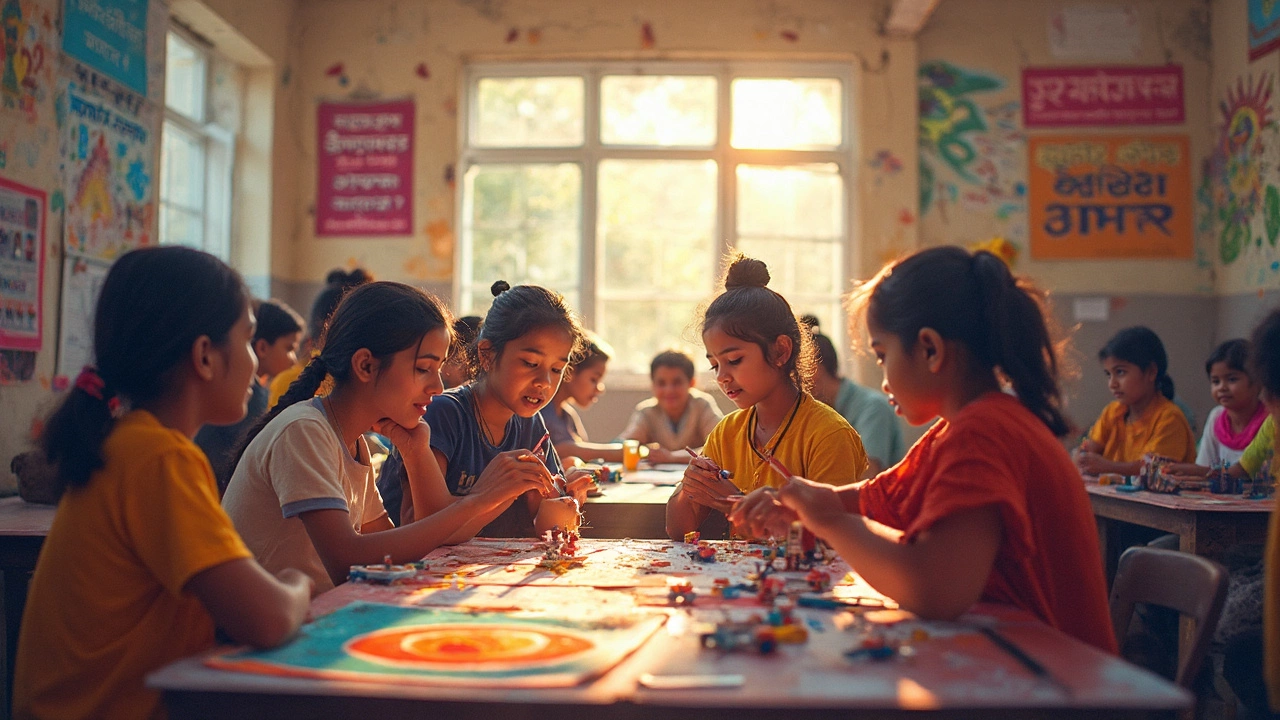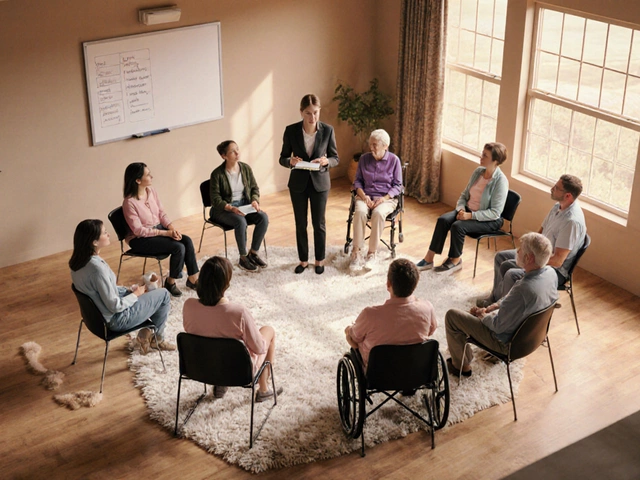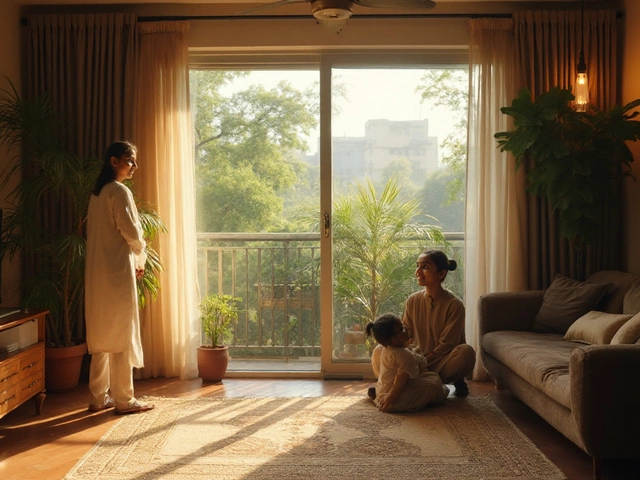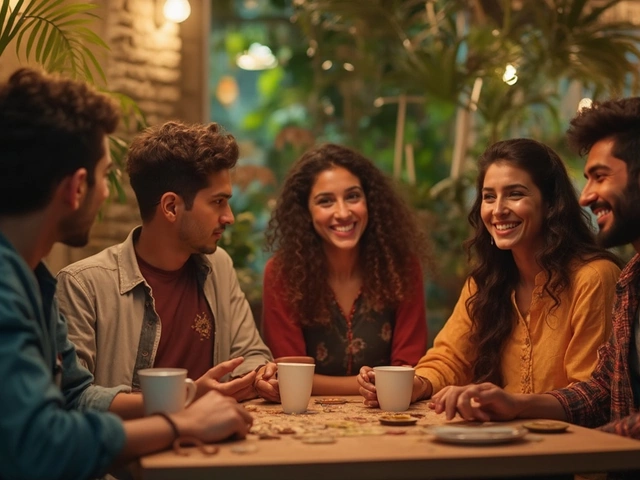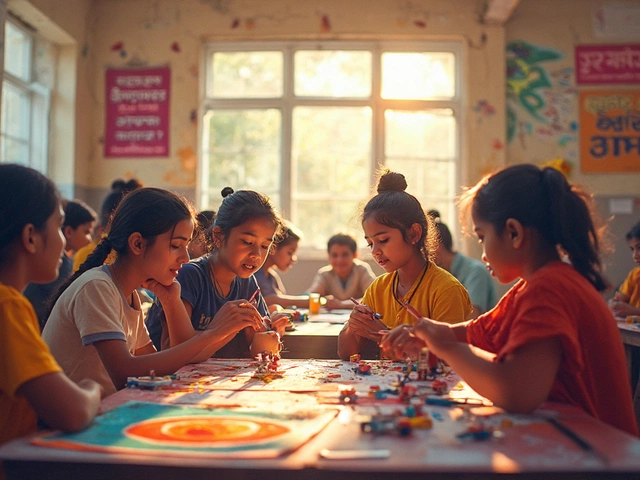Ever feel like there's just too much information about youth activities, but never a clear answer on what actually shapes a young person’s growth? Here’s the deal: the nine centers of youth development each focus on a different core part of growing up strong, confident, and ready for the real world.
Youth organisations use these centers as building blocks. They don’t just throw kids in a room and hope for the best. Instead, they create spaces—physical and virtual—where young people can build friendships, learn leadership, express themselves, and get real support. If you’ve ever wondered why some teens just seem to thrive, chances are they’ve tapped into a few of these centers already.
Knowing what these centers are helps you spot where you (or a young person you know) can get help or push yourself. It’s not about talent. It’s about access and the right set of experiences. And guess what? Most communities have at least some of these centers—sometimes, it’s about looking in the right places, not traveling far or spending a ton of money.
- The Big Picture: What Are Youth Development Centers?
- Social Center: Building Friendships and Teamwork
- Emotional Center: Coping and Confidence
- Physical Center: Health and Active Lifestyles
- Creative Center: Talent and Self-Expression
- Career and Leadership Center: Skills for the Future
The Big Picture: What Are Youth Development Centers?
Youth development centers sound official, but really, they’re hubs where young people build skills, get support, and form connections that shape who they become. You’ll find centers attached to schools, community groups, or big names like the YMCA and Boys & Girls Clubs. Think of them as the foundation of youth development, giving young people the right tools to succeed inside and outside the classroom.
These centers don’t just offer after-school hangouts. They create structured programs touching on leadership, mental health, sports, volunteering, arts, and job readiness. A survey from America’s Promise Alliance found that teens who use these programs are up to 31% more likely to stay in school, and those attending regularly develop stronger social skills and higher self-esteem. When parents ask what actually makes a difference, the research points straight to hands-on experiences in these environments.
There’s no one-size-fits-all. One center might focus on athletics, another on tech, another on art and design. The goal isn’t to create a cookie-cutter teen. It’s about unlocking every kid’s potential in different ways. Here’s a quick look at what these centers usually focus on:
- Helping young people grow emotionally and mentally
- Building a sense of belonging and teamwork
- Teaching practical skills like public speaking and project management
- Giving a safe place to practice new things and take healthy risks
If you want the numbers, here’s a snapshot from a 2023 report by Youth.gov:
| Program Type | % Youth Participation (Ages 12-18) |
|---|---|
| Sports & Physical | 52% |
| Arts & Performance | 37% |
| STEM/Tech | 24% |
| Leadership & Volunteering | 41% |
So if you’re looking for opportunities, ask what core areas each center covers. The best programs have a real mix—because growth isn’t just about one thing. It’s about giving kids the freedom and safety to figure out who they are, surrounded by others going through the same thing.
Social Center: Building Friendships and Teamwork
Friendships and teamwork don’t happen by accident—they get built step by step. That’s where the youth development social center comes in. Whether it’s after-school hangouts or community projects, these centers are like training grounds for real-world social skills. You learn how to talk to people from different backgrounds, work as a team, and handle disagreements without the drama.
Think about it: most jobs, clubs, and even college group projects want you to be good with people. According to a 2023 survey from the Search Institute, 87% of youth who take part in social-focused youth programs say they feel more confident around others. It’s not just about making friends—learning to trust, listen, and solve problems together has ripple effects that last into adulthood.
Youth organisations run all kinds of activities to support this growth. Here’s what usually works best:
- Group sports, like soccer or basketball, for teamwork and fair play
- Community service projects, where everyone pitches in for a cause
- Small group discussions or circle time—practice active listening and sharing opinions
- Team-building games and problem-solving challenges
Check out this quick look at what young people say they gain from social development programs:
| Skill Gained | % of Youth Reporting Improvement |
|---|---|
| Better Communication | 84% |
| Stronger Friendships | 81% |
| Increased Teamwork | 78% |
| Less Social Anxiety | 66% |
Here’s a tip: If you’re nervous about jumping into a new group, start by volunteering or joining a club where you have something in common with others. It’s way easier to talk to people when you’re all interested in the same thing. Don’t stress about being outgoing right away—the main thing is to show up and try. Friendships grow from shared experiences and a bit of effort, not flashy conversation skills.
Emotional Center: Coping and Confidence
Here’s where things really change for young people: the emotional center is all about building resilience, learning how to handle setbacks, and finding confidence in everyday life. In youth organisations, this piece doesn’t get left to chance. There are actual programs and staff trained to help kids and teens talk about their feelings, figure out tools for managing stress, and bounce back stronger after tough moments.
Coping skills aren’t just buzzwords. They’re things like identifying what triggers stress, learning how to breathe through anxiety, or finding a trusted adult to talk things through. You’ll often see peer support groups, workshops, or even one-on-one sessions offered. Practical stuff—role-playing tough conversations, learning positive self-talk, or making a list of safe places to calm down—can make a huge difference.
Building confidence works right alongside coping. When a young person feels heard and supported, their self-esteem grows. Studies from organizations like the Search Institute show that teens involved in youth development programs report up to 40% fewer symptoms of depression and anxiety than their peers who aren’t practicing these skills. The more support they get, the more likely they are to try new things and stick with them, even when it’s hard.
| Skill/Benefit | Impact on Youth |
|---|---|
| Stress management | Lower risk of burnout and emotional outbursts |
| Peer support | Reduces feelings of isolation |
| Goal setting | Boosts motivation and sense of control |
| Risk assessment | Helps with decision-making |
If you’re a parent or mentor, here’s a tip: ask questions that get teens talking (“What was the best part of your day? What was tough?”) instead of giving advice right away. Sometimes just being heard is enough for them to figure out their next steps. And for teens themselves? It’s totally normal to struggle. But these skills can be built, one step at a time, without feeling fake or pressured.
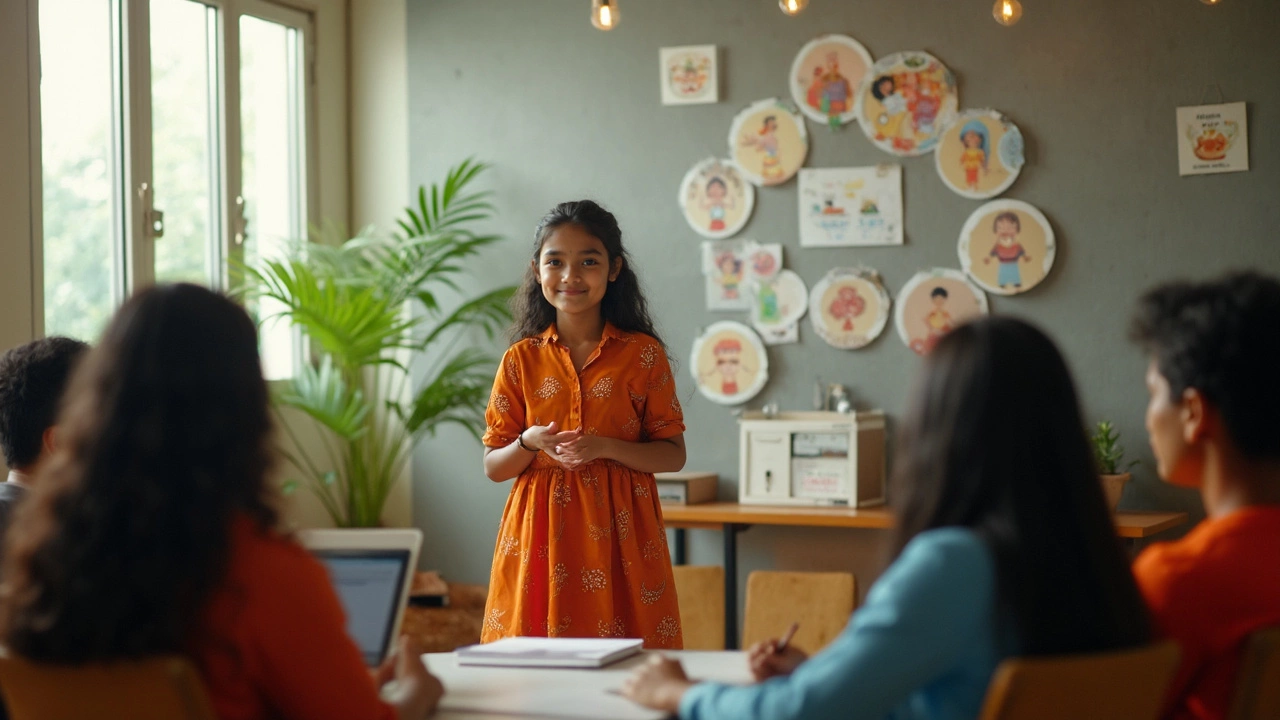
Physical Center: Health and Active Lifestyles
Every youth development program worth its salt carves out space for physical health. Why? Because staying active isn’t just about building muscle or making varsity. Regular movement actually boosts mental focus, mood, and even helps kids sleep better. Most youth organisations keep this simple—think basketball leagues, group hiking, dance, or even yoga for stress relief. The real trick is finding a sport or activity that feels fun, not forced.
You’d be surprised how many teens skip physical activity. In the US, about 75% of high school students don’t get the recommended hour of activity daily. It’s not always laziness—sometimes it's cost, location, or just not knowing what’s out there. The good news: youth centres usually offer a wide menu, from martial arts to walking clubs. There’s space for everyone, even those who don’t love classic team sports.
Let’s look at what’s usually on offer at a physical center:
- Affordable access to gyms or sports courts
- Guided group activities like runs, Zumba, or self-defense classes
- Workshops on health basics: nutrition, hydration, and injury prevention
- Peer coaching and opportunities to lead events (great for building confidence)
Creating healthy habits young pays off down the line. Kids who stick with activities are less likely to struggle with chronic diseases and more likely to build social circles around shared interests. Worried you’re behind? Don’t be—many youth centres run programs for all skill levels. Nobody expects you to show up able to dunk or bench-press a car.
Here’s a snapshot of what participation in youth sports and physical activities can mean, according to recent data:
| Benefit | How Many Youth Experience This (%) |
|---|---|
| Better mental health | 31 |
| Higher self-confidence | 28 |
| Lower screen time | 22 |
| More frequent healthy eating | 18 |
At the heart of any youth development plan, physical centers help bring out that energy and give young people a healthy outlet. If you’re looking to join, just ask what’s open to beginners—most programs are happy to help you start slow and keep going at your own pace.
Creative Center: Talent and Self-Expression
Here’s something a lot of people overlook: creativity isn’t just about painting or singing. The creative center in youth development is all about helping young people figure out what they’re good at—and letting them try new things in a safe space. Think music, dance, digital art, writing, coding, or even cooking. When teens get to work on creative projects, they’re not just passing the time. They’re learning problem-solving, boosting their confidence, and even lowering stress.
Plenty of youth development programs now offer workshops and clubs for things like podcasting, photography, robotics, or fashion design. A 2023 survey by the National Guild for Community Arts Education found that over 70% of youth reported improved communication skills after joining arts-based activities. That’s not just theory—it’s real change in how young people present themselves and work with others.
- Staff encourage experimentation, so there’s no "right way” to create.
- Teens can showcase their work at community events—think talent shows, art exhibits, YouTube channels.
- Collaboration is a big part; group projects build teamwork and mutual respect.
- Mistakes aren’t punished; they’re seen as learning or even inspiration for new projects.
If you’re working with youth, set up regular "maker days" where everyone tries a new skill together. If you’re a parent or teen, look for programs that let you dabble before you commit (trial classes or drop-in sessions).
For those who like numbers, here’s a quick look at what creative centers can offer in terms of benefits and participation:
| Activity | Average Participation Rate (Ages 12-18) | Reported Skill Improvement (%) |
|---|---|---|
| Music/Band | 34% | 68% |
| Digital Art/Animation | 22% | 74% |
| Writing/Storytelling | 16% | 71% |
| Drama/Theater | 13% | 66% |
Creativity isn’t a side gig for youth organizations. It’s a powerful hook for engagement, learning, and personal growth. Teens who get creative outlets find it easier to speak up, connect, and move forward in whatever they choose next.
Career and Leadership Center: Skills for the Future
Ever notice how some teens walk into their first job or community project and seem to know what’s up? A lot of that comes from the youth development focus on career and leadership. These aren’t just about prepping for a specific job; it’s about giving young people real-life skills—problem-solving, teamwork, public speaking, and even basic financial know-how—that employers and colleges actually care about.
Career and leadership centers help young people by offering:
- Workshops on job interview prep and writing resumes
- Public speaking and debate clubs
- Group projects and community service for hands-on leadership practice
- Mentoring sessions with real professionals from local businesses
- Finance basics like budgeting or how to open a bank account
Youth organisations often partner with big companies or universities to get students into real work environments. For example, the 4-H program in the U.S. has teamed up with major banks to teach teens basic money skills, and the Girl Scouts let members earn badges in entrepreneurship or STEM leadership.
Numbers don’t lie. Check out how involved kids benefit, according to a recent Youth Development Survey in the U.S.:
| Skill | % of Youth Improved |
|---|---|
| Public Speaking | 67% |
| Teamwork | 74% |
| Job Readiness | 59% |
| Financial Skills | 52% |
If you’re a parent or a teen trying to make the most of these centers, grab every chance to take part in leadership programs—even if it’s just running a meeting or planning a small event. The experience stacks up fast. And don’t wait for someone to invite you; reach out to your local youth organisations, check their calendars, and ask about career events or leadership challenges. The key is stepping up and getting involved, even if it feels a bit scary at first.
